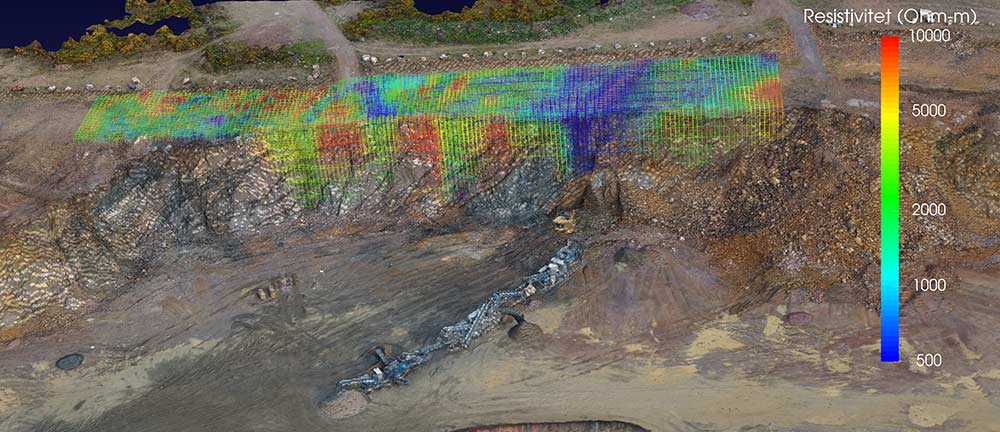The many advantages afforded by building underground are of little worth if the geological conditions are not favourable. Fortunately, the rock underlying much of Sweden is mostly suitable for building tunnels and rock caverns.
Favourable geological conditions
Much of the country lies on a very hard basement of Precambrian Shield rocks, which either form the surface or are covered by a thin layer of soil. The basement mainly comprises granitoid and metamorphosed rocks, transformed crystalline rock types that contain varying degrees of fractures and crushed zones. The solid rock is generally very strong, but permeability in the fractures and crushed zones can vary considerably, affecting the conditions for rock construction.
In some parts of Sweden, the crystalline basement is overlain by sedimentary rocks, mainly sandstones, limestones and shales. The sedimentary rocks differ from the crystalline basement in two main ways. One is that the strength of the individual rock types varies, from very strong to very weak. The other is the layered nature of the rocks. Often, the solid sedimentary rock types are more porous, which can have a negative effect on deformation and permeability properties.
Choosing a location for an underground facility

More comprehensive investigation measures, including geophysical methods, improve the reliability of the preliminary assessments.
Every area where an underground facility is under consideration has its own geological history that determines the rock properties and its fracture system. In order to decide whether construction of a facility is viable, it is important to understand the geological history, so that issues such as mechanical stability, permeability, effect on the surrounding area, and maintenance aspects can be considered.
Rock is not homogeneous, and sections of good-quality rock may also contain zones with different rock types of poorer quality that present problems for rock engineers. Extra reinforcement measures, drainage or sealing may be needed, which increase building costs.
In the preliminary assessments, geologists and rock engineers consider the planned facility in relation to the geological conditions, determining the best site or route, and avoiding problematical sections and undesirable effect on the surroundings. The most suitable construction technique is identified in this phase. Here, geologists and engineers use geological maps, databases, and existing comprehensive documentation about local rock conditions generated by earlier facilities in the vicinity, drilled wells etc. More comprehensive investigation measures, including geophysical methods, improve the reliability of the preliminary assessments.
When a more detailed analysis is necessary, there are a number of different methods available to find out more about the rock properties and constructability.
Risks and uncertainties
Underground construction involves a cyclical repetition of work processes to loosen the rock, remove the spoil, and reinforce the walls and roof. Disruption to any work processes may hold up the entire cycle. The costs of running work teams and machinery are high, and any downtime can entail considerable extra costs. Anticipating and managing risks and uncertainties are key aspects in ensuring that a construction project runs as smoothly as possible.
Geological conditions are often complex and unknown, and this is where many of the risks and uncertainties lie. It is difficult to establish the detailed conditions of the rock in advance, and this uncertainty must be managed in all underground projects to avoid expensive disruption. The work environment must also be acceptable, and the work must always be carried out under safe conditions.
The completed tunnel or rock cavern must fulfil societal and user requirements for stability, durability and safety, with limited impact on the surroundings. This requires analyses of rock mechanics that are largely based on empirical data. In generally well-known rock environments, some critical rock properties may remain unknown. This is another uncertainty that must be accounted for.
Geology of Sweden in brief
The rock in Sweden is dominated by the Precambrian crystalline basement and by the rocks in the Scandinavian Caledonides. In some areas, the crystalline basement is overlain by sedimentary rocks, shown in pale blue on the map.



